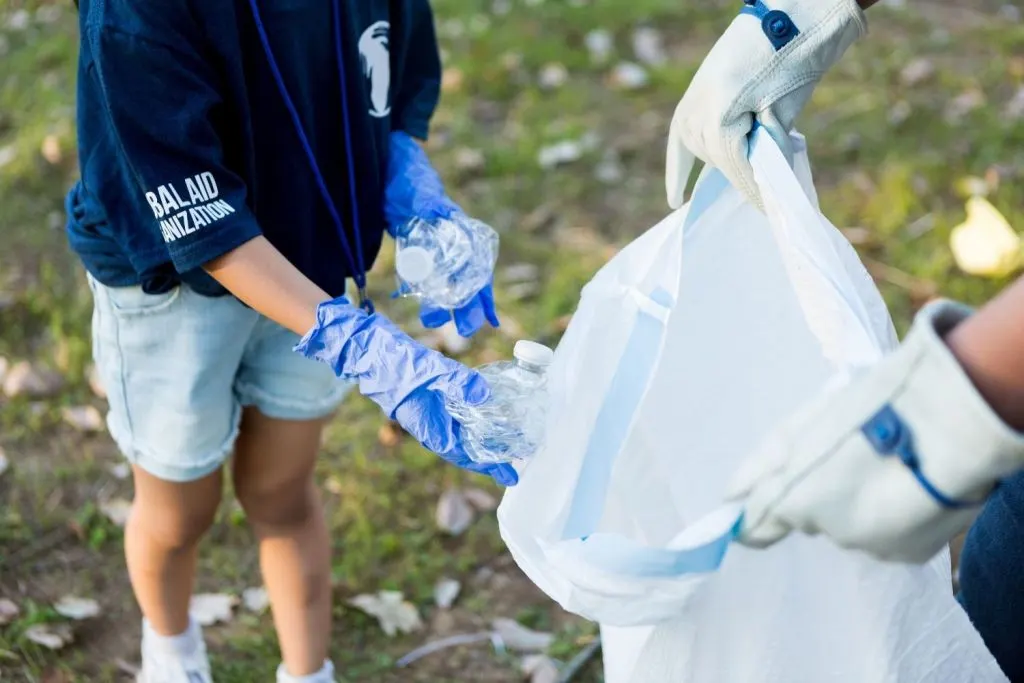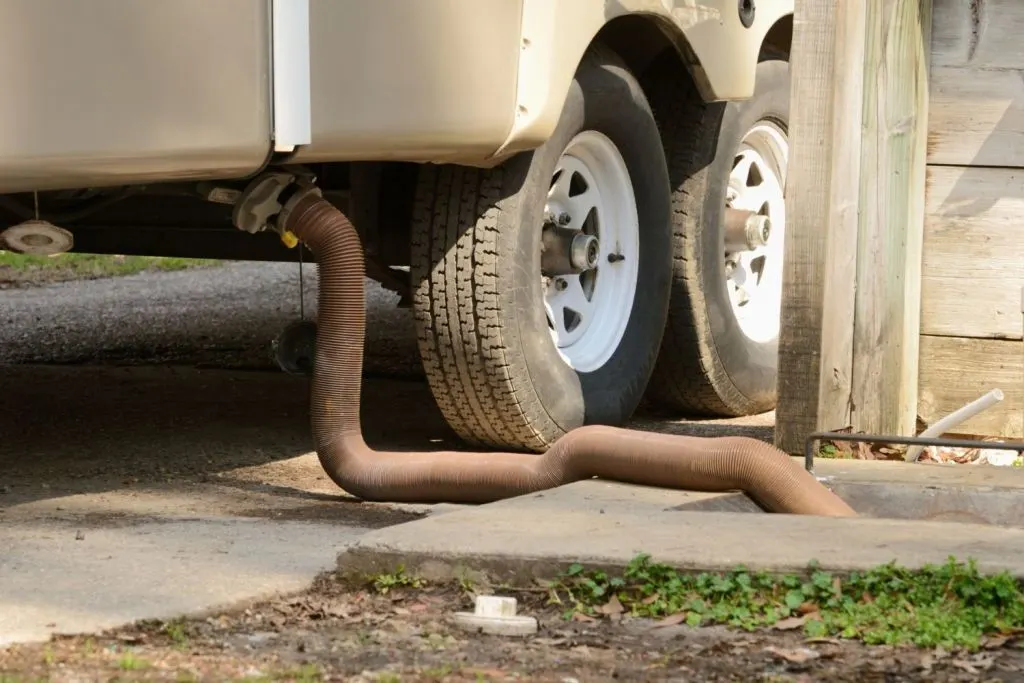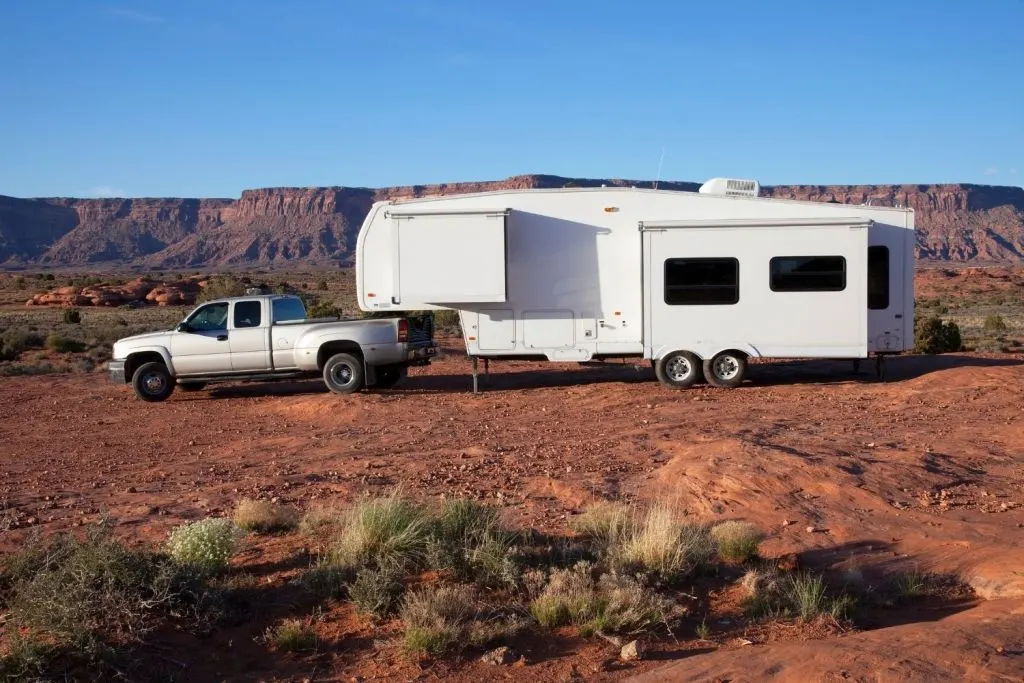Gov’t Extends Ban on Boondocking in Parts of Arizona
The Verde Valley in central Arizona is one of the most popular places for RVers and campers.
From quaint mountain towns to Native American Ruins and the scenic red rock vistas of Sedona, this might just be one of the best places in Arizona.
Verde Valley is known for an abundance of beautiful BLM camping, too. But a large portion of these boondocking sites have been closed down to camping since 2018. And as of January 7th, camping bans have been extended.
Here’s why & where…

Prescott National Forest Camping Ban Extended
In 2018, Prescott National Forest Officials enacted a 2-year camping ban along Highway 260 from Cottonwood to Camp Verde.
This 15mile stretch of road is surrounded by an abundance of National Forest and BLM land that has attracted RVers and campers from all over.
As of January 7 2021, Prescott National Forest Rangers extended the camping ban for another 2 years.
In 2017, Cottonwood Police responded to 226 complaints about trash, drugs, and other issues which helped prompt the closure.
The main reasons for closing the land was abuse and overuse by campers dumping trash, human waste, and overstaying their limits. Camping is typically allowed for up to 14 days on National Forest land, but it seems some people were making themselves at home and treating this area like a junk yard.
Prescott National Forest Ranger Todd Willard said:
“It was extraordinary what we saw there. I mean, we had vehicles, I mean, it looked like a used car lot on one side of the road. All these vehicles were for sale, and this is on forest system lands.” (Quote from KJZZ.org)
Between 2018 and 2019, forest officials removed 8,500 pounds of trash from the area.
Popular YouTubers, Enjoy the Journey Life, recently published a video about this issue. We recommend watching it below.
Ecological Impact of Irresponsible Campers Reason For Ban
Human impact is the number one reason these areas were closed to camping. There are plenty of responsible campers – but it only takes a few bad apples to ruin it for everyone.
Debbie Maneely, public affairs officer for the Prescott National Forest, said this ban was originally instated because: “The dispersed camping area was overused… [with] resource damage that provided an unpleasaant camping and recreation experience for legitimate recreational users… The closure will provide time for resource recovery, cleanup of abandoned property and trash and will improve public safety issues.”
Not only were these campers damaging the fragile desert ecosystem, they were creating an unsafe environment for themselves and other campers.
Campers were dumping trash, human waste, using drugs, and abandoning property like vehicles, campers, and more.

Areas Closed by Prescott National Forest Camping Ban
Areas affected by this camping ban include all BLM camping areas along Highway 260 running along the Verde River. This area goes from Cottonwood, Arizona to Camp Verde, Arizona.
There are 3 separate areas that make up the camping ban, as can be found in the official document here.
We’ve added a photo of the map below, view the full map here.
Does The Verde Valley Camping Ban Mean I Can’t Stay in Prescott National Forest?
Prescott National Forest has 11 campgrounds which are all still open. These campgrounds are known to fill up fast, so reservations are encouraged.
Aside from camping in Prescott National Forest, you can still camp on BLM land outside of Sedona, which falls into a different forest district. The Coconino National Forest manages BLM land around Sedona, which is just a 20 minute drive from the Cottonwood area.
Be A Responsible Camper – Lead By Example
It’s not just the popular camping areas in Arizona that are at risk of facing the fate of being closed. This is a problem everywhere.
Overuse and abuse of public lands not only damages the environment, it puts responsible RVers at risk of losing valuable and beautiful public lands for camping and recreating.
A few bad people can ruin it for everyone… So what can you do? Here are some tips for boondocking responsibly.

Always Leave It Better Than You Found It
If you roll up to a boondocking site that was trashed before you got there, clean it up. If you have the means to help facilitate a cleanup of a larger area, rally some friends together, get a truck, and get to it!
The National Forest and BLM departments that manage our public lands spend tons of money and time cleaning up these areas every year. If more campers pitched in it would not only help the environment, but help the agencies that oversee the environment, too.
Never Overstay Stay Limits
In the case of the BLM land in the Verde Valley, it makes no sense to overstay a 14 day limit when you can drive 20 minutes down the road and be in a new forest district. If you want to stay in one area for longer, find an RV park or a different forest management district to bounce between instead of staying in one spot for so long.
Stay limits exist to prevent damage to the ecosystem and to prevent people from living in these public areas.
Never Dump Your Tanks On The Ground
This should go without saying – but never ever dump your tanks on the ground. In some places, it may be legal to dump gray water. But this is rare and just because you can doesn’t mean you should!
Find a legal RV dump station to dump your tanks. Human waste is incredibly harmful not only to the environment, but to other people and animals as well.

Pack It In, Pack It Out
This goes right along with leaving it better than you found it. Anything you bring in with you needs to leave with you, too. This includes not burning trash in a fire ring! Glass and metal do not burn, and plastic leeches harmful chemicals.
Camp In Designated Areas Only
If you’re boondocking in a large BLM area, choose somewhere that has obviously been camped on before.
Don’t flatten grasses or clear leaf/twig litter just to make a campsite. Never create a new fire ring. Never create trails.
Always use existing campsites, existing fire rings, and existing trails. If everyone decided to clear their own campsite, there would be no nature left to these beautiful natural sites.
Protect Our Public Lands
It’s not hard to leave a place better than you found it. For every irresponsible camper, there may be 10 who are doing their part to clean up. If you’d like to see public lands protected and open for enjoyment for generations to come, do your part!

Discover the Best Free Camping Across the USA
To be honest with you, we hate paying for camping. There are so many free campsites in America (with complete privacy).
You should give it a try!
As a matter of fact, these free campsites are yours. Every time you pay federal taxes, you’re contributing to these lands.
Become a FREE CAMPING INSIDER and join the 100,000 campers who love to score the best site!
We’ll send you the 50 Best Free Campsites in the USA (one per state). Access the list by submitting your email below:

While I am sure some campers were responsible for the trash issue, it sure looks to me that some locals are also responsible for the vast amount of household items dumped there. That perspective doesn’t seem to be addressed anywhere I have seen.
Thank you for your valuable information. I am a camper in a 30 foot motorhome. I am one of those that pickup trash and encourage others to do the same. Some get the idea and start picking up trash and taking it with them. The 14 Day BLM’s are what I seek and where I stay. Maybe, an online campaign could be started. It would be nice if they started putting this campaign television and elsewhere. The same Government that is involved really should be a part of the advertising considering that our taxes are involved in their well-being.